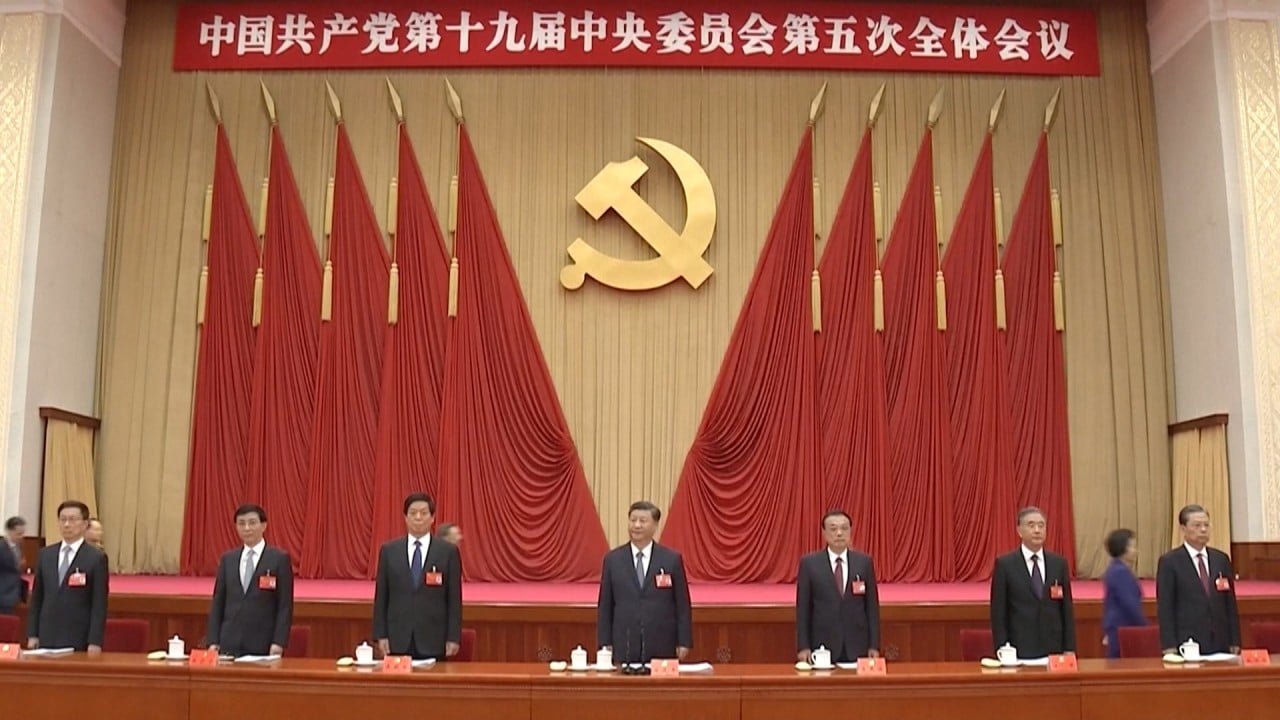
China GDP targets may resume for 2021-25, state planner says
- Ning Jizhe says the National Development and Reform Commission will propose ‘targets and specific indicators’ for the 14th five-year plan
- Beijing decided in May not to set a specific annual economic growth target for this year due to the unprecedented impact of the coronavirus
China may resume setting annual economic growth targets over the next five years after abandoning the practise in 2020, the country’s top economic planning agency said on Friday.
His comments suggest gross domestic product (GDP) growth will continue to be at the heart of Beijing’s economic strategy, despite recent emphasis on addressing imbalances and underdevelopment in the economy.
The commission plans to include economic targets in a draft outline of the 14th five-year plan, which will map out development goals for the period 2021-25, and wait for approval at next March’s National People’s Congress, Ning said.

03:05
What happened at the Chinese Communist Party’s major policy meeting, the fifth plenum?
“Development is the foundation and key to solving all problems in our country, and the top priority of the Party in governing and revitalising the country,” Ning said at a press conference on Friday.
“[We will] boost the economy to realise both a reasonable growth in quantity and a steady improvement in quality.”
A communique outlining the decisions from the plenum contained no mention of an economic growth rate, a departure from seven decades of Communist Party convention.
China’s economy has grown at an average rate of 6.5 per cent over the past four years, according to data from the National Bureau of Statistics. But with growth expected to be about 2 per cent this year, the target is likely to be missed.

01:47
China GDP: economy grew by 4.9 per cent in third quarter of 2020
Ning’s remarks will hush long-running speculation that Beijing might choose to scrap numeric GDP growth targets for the next five years.
It is clear, however, that Beijing has concerns that go far beyond the annual pace of economic growth.
Thursday’s communique gave a broad outline of China’s development plan for the next five years and a longer term vision for 2035. It used the phrase economic growth only twice, but mentioned security 22 times.
“The relationship between development and security should be well managed, ensuring there are no systemic risks affecting the modernisation process,” Han Wenxiu, deputy director of the Office of the Central Commission for Financial and Economic Affairs explained during Friday’s press conference.
China’s per capita GDP has exceeded US$10,000, [so we are] in a critical period of crossing the middle-income stage and becoming a high-income country
“China’s per capita GDP has exceeded US$10,000, [so we are] in a critical period of crossing the middle-income stage and becoming a high-income country,” he said.
The middle income trap is a concept in which a country rapidly attains middle-income status, usually as a result of cheap labour and export-driven manufacturing, but becomes stuck at that level and fails to catch up further with developed nations.
Justin Yifu Lin, former World Bank chief economist and one of China’s key economic advisers, told at a tech conference on Wednesday that China’s economy could expand by 8 per cent each year till 2030 due to cutting edge technologies like 5G communication and its huge domestic market.
Xu Hongcai, deputy director of the Economic Policy Commission at the China Association of Policy Science, forecast China’s annual growth rate would slow to 5 to 6 per cent by 2025, after decades of high-speed growth. He expected growth rates of around 2 per cent this year and 7 per cent next year.

05:06
Millions of new blue-collar jobs are piling on pressure for many workers in China
The communique released on Thursday outlined plans to create jobs, bridge the income gap between different economic sectors and regions, and boost domestic consumer spending.
Priorities over the next five years include expanding employment opportunities, raising incomes and improving the social safety net, Ning said.
China would also relax restrictions on buying cars and boost “healthy” growth in the housing market, he said. China’s leaders have long been worried about asset bubbles in portions of the country’s rapidly growing property market.
China’s economic growth would rely more on domestic consumption and investment in the future, Han said. But he added President Xi Jinping’s inward-looking “dual circulation” strategy did not mean the country would stop opening up to the world.
“We must create a market-oriented, rule-of-law based, international business environment with a strong domestic market … that attracts high-quality international production and is fertile ground for foreign investment.”

